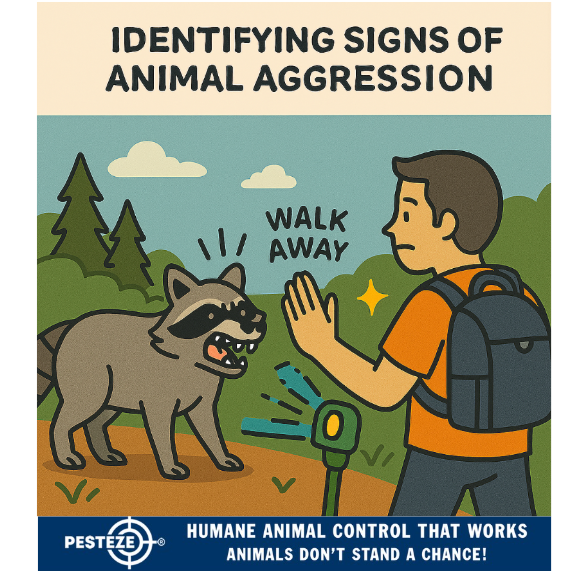IDENTIFYING SIGNS OF ANIMAL AGGRESSION

IDENTIFYING SIGNS OF ANIMAL AGGRESSION
SUMMARY
Recognizing signs of animal aggression is essential for staying safe during wildlife encounters or interactions with domestic animals. Aggressive behavior can stem from fear, territorial instincts, or illness, and knowing how to spot early warning signals can prevent injury and conflict. This guide outlines key indicators of aggression across various species and offers practical advice for responding calmly and responsibly. Whether you're hiking, working with animals, or observing wildlife, these insights will help you stay alert and protected.
FEATURES
-
Body Language Cues: Learn how posture, fur position, and tail movement signal rising tension.
-
Vocal Warning Signs: Identify growls, hisses, barks, and other sounds that precede aggression.
-
Facial Expressions: Understand how eye contact, ear position, and snarling reveal intent.
-
Defensive vs. Offensive Behavior: Distinguish between fear-based reactions and predatory aggression.
-
Species-Specific Indicators: Recognize unique signs in dogs, cats, birds, reptiles, and wild animals.
-
Safe Response Strategies: Discover how to de-escalate and retreat without provoking further aggression.
GUIDE DESCRIPTION
Animal aggression can manifest in many ways, and recognizing the signs early is key to avoiding dangerous situations. This guide helps you identify behavioral cues that suggest an animal may be preparing to defend itself or attack, whether in a domestic setting or the wild.
Start with body language. Raised hackles, stiff posture, puffed feathers, or arched backs are common indicators of tension. Tail movement also matters—rapid wagging in dogs or lashing in cats can signal agitation rather than friendliness.
Vocalizations are another warning. Growling, barking, hissing, or screeching often precede aggressive actions. These sounds are meant to intimidate or warn, and should never be ignored.
Facial expressions offer further clues. Direct eye contact, bared teeth, flattened ears, or dilated pupils suggest the animal feels threatened or is preparing to strike. In birds, flared wings and open beaks may indicate defensive behavior.
It’s important to differentiate between defensive and offensive aggression. Defensive behavior is fear-based and often includes retreat attempts, while offensive aggression is more deliberate and predatory. Understanding this distinction helps you respond appropriately.
Different species show aggression in unique ways. For example, a snake may coil and rattle, while a deer might stomp or snort. Familiarize yourself with species-specific behaviors to improve your situational awareness.
If you encounter signs of aggression, remain calm. Avoid direct eye contact, speak softly, and back away slowly. Never corner or challenge the animal. If necessary, use deterrents like noise or barriers to create space.
By learning to identify and respond to animal aggression, you’ll reduce risk and foster safer interactions with both domestic and wild creatures.
- Amy Chang


Comments 0